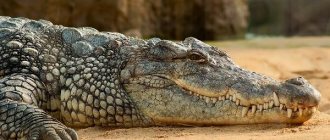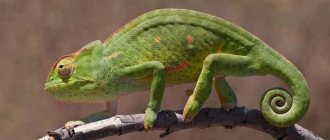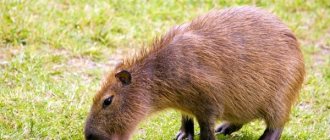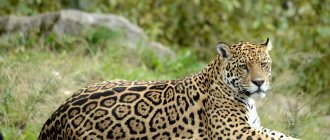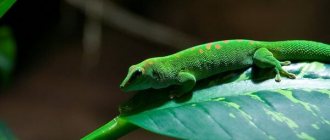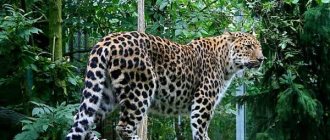D Williams Photography/Getty Images
Alligators are reptiles and members of the crocodilian family, which includes crocodiles, caimans, Mississippi alligators and Chinese alligators. These cold-blooded reptiles typically grow between 1.8 and 3.35 meters in length and live primarily in wetlands. Mississippi alligators can be found in the wild in Louisiana and Florida, USA, where they were once nearly extinct. Today they are off the endangered species list and thrive in the bay, lakes and even golf courses.
These primarily meat-eating reptiles fascinate many people with their strength, speed and ferocity, but there is even more to alligators than meets the eye. Discover the wildest facts about alligators, from glow-in-the-dark eyes to a surprisingly loud roar.
Alligators are ancient animals
Fossil of an ancient crocodile. markchentx/Getty Images
Alligators, like other crocodiles, have undergone very few evolutionary changes since the time of the dinosaurs. Mississippi alligators appeared about 84 million years ago, and their ancestors more than 200 million years ago. The only older reptiles are turtles. In fact, alligators are more closely related to dinosaurs than to other modern reptiles ().
They cannot survive in salt water
Mike Fuss/EyeEm/Getty Images
Unlike crocodiles, alligators are unable to remove salt from water, so they cannot swim in salt water such as mangrove swamps. So if you see a crocodile in salt water, you can bet it's not an alligator.
Continuation of the family line
Puberty occurs at 10-12 years. The breeding season for Louisiana alligators occurs in the spring, when the air and water warm up to optimal temperatures. Reptiles mate at night, in shallow water.
herping_woman
The male demonstrates his readiness by sticking his massive head high out of the water.
Mating is preceded by a courtship ritual. The males call the females with a loud roar or low-frequency sounds that create small bubbles on the surface of the water.
Individuals rub against each other and push. Females choose large and strong “men” to give birth to viable offspring.
Males often engage in single combat with each other for the right to mate with females. Often the latter themselves become the initiators of mating games.
During the mating season, American alligators organize mass mating gatherings called “alligator dances.” Several dozen reptiles gather together, swim nearby, court, fight, and then form pairs.
Animals are polygamous. In his territory, protected from rivals, a male can mate with a dozen females.
After fertilization, the expectant mother builds a nest from branches, grass and fallen leaves, where after 2 months she lays up to 50 eggs. The eggs will stay there for 8 weeks. Then the young hatch, 15-20 cm long.
mario_aldecoa
The female selflessly guards the nest, but despite this, the eggs often become someone else's prey. The mother carries the cubs into the water in her own mouth.
The female will remain with her offspring for several months. It often happens that cubs from closely located clutches are mixed. In this case, the females jointly raise and protect a huge brood.
The largest alligator weighed more than 450 kg
Artush/Getty Images
The largest alligator in the world (so far) was 4.8 meters long and weighed 458 kg. This alligator was caught in Mill Creek, a tributary of the river in Alabama, USA. Some crocodiles grow even larger; The largest crocodile in captivity is Cassius, an Australian crocodile, 5.18 meters long ().
The sex of an alligator is determined by temperature
Casanowe/Getty Images
That's right - if the temperature in the nest of baby alligators is warm, male alligators are born; if the temperature is cool, then the cubs are females. The mother alligator lays her eggs on a mound of earth. When the eggs are ready to hatch, baby alligators use the "egg tooth" on their snout to break the eggshell ().
They can run fast, but get tired quickly
Pat33146/Getty Images
Alligators are built for speed, not endurance. They can run up to 56 kilometers per hour - faster than most people - but they are sprinters and cannot maintain this pace for long. In water they can lunge at speeds of up to 48 kilometers per hour. They can also swim very fast, using their powerful tail to propel themselves forward (,).
General characteristics of the gharial order
This representative includes only two species - the Gangetic gharial and the gharial crocodile . These species are considered large semi-aquatic reptiles similar to common crocodiles. A distinctive feature is the very thin structure of the muzzle, with the help of which they can deftly cope with catching fish.
The habitat of the gharial crocodile has spread to Indonesia, Vietnam and Malaysia.
The Gangetic gharial is sometimes found in Nepal, Myanmar and Bangladesh. In many areas this species has completely disappeared. The gharial order spends most of its time in the water, where it can reach its food with dexterity.
Alligator eyes glow in the dark
Glowing eyes of alligators in the river at night. Cavan Images/Getty Images
Alligators' eyes are located on the top of their heads, which allows them to remain almost completely underwater and still see their prey. Alligators, like cats, have a structure at the back of their eyes that reflects light to improve night vision. If you catch an alligator's eyes with a flashlight, they will glow red. You can also determine the size of an alligator by the distance between its eyes: the greater the distance, the longer the alligator ().
Nutrition of crocodiles
Most representatives prefer solitary hunting; rare species can cooperate to search for prey. The oldest crocodiles include large game in their diet. These include:
- Antelopes;
- Lions;
- Rhinoceroses and elephants;
- Hippos;
- Buffaloes;
- Zebras.
No other animal compares to the crocodile with its sharp teeth and wide mouth. Once the victim gets into the mouth of a crocodile, he will not be able to get out of it. As a rule, the crocodile swallows its prey whole, and sometimes tears it into pieces. Large crocodiles eat a huge amount of food per day, usually amounting to 23% of their own body weight.
Since ancient times, their constant product has been fish. Thanks to its habitat, this type of snack is as fast and accessible as possible.
They thrive in slow moving waters
Mark Newman/Getty Images
All alligators live in fresh water; they usually prefer slow-moving rivers, streams, swamps and lakes. Mississippi alligators live in slow-moving waters in the southeastern United States, from North Carolina to Texas. The Chinese alligator, a close relative, lives almost exclusively in the lower Yangtze River in China ().
Alligators can grow 3,000 teeth in their lifetime
D Williams Photography/Getty Images
Alligators have about 75 teeth in their mouths at any one time, but as teeth wear out or break off, they are replaced. As a result, many can grow around 3,000 teeth during their lifetime. According to some sources, alligators can bite with a force of almost 3,000 pounds per inch (1,360 kg by 2.5 cm), making their bite one of the strongest in the world ().
Population and species status
Photo: Animal alligator
There are quite a lot of Mississippi alligators - there are over a million of them, so they are not in danger of extinction. Although not so long ago the situation was different: by the middle of the last century, the range and population were greatly reduced due to active poaching, as a result of which the authorities had to take measures to protect the species.
This had an effect, and its numbers recovered. Nowadays, many crocodile farms have been opened in the United States, where they are successfully bred. In this way, it is possible to obtain valuable leather, as well as meat that is used for steaks, without harming the number of wild reptiles.
Chinese alligators are a different matter. There are only about two hundred of them in natural conditions, which is why the species is included in the Red Book. The population has declined largely due to poaching, since crocodile meat is considered medicinal, and other parts of it are also valued.
Interesting fact: The Chinese name for local alligators translates to “dragon.” They probably served as the prototype for the mythological Chinese dragons.
But the main threat is not this, but the constant reduction of the territory suitable for alligators to live due to its development by humans. Many of the reservoirs in which they once lived are now used to grow rice. Local residents sometimes have conflicts with reptiles; many are hostile to them and do not believe that preserving the species will be beneficial.
Unlike most reptiles, they care for their young
bmagee817/Getty Images
For about two years, female reptiles carry and care for their young, making sure they are safe and well-fed. Babies grow about 30 centimeters per year, so by the time they become independent, they are large predators.
Alligators can eat their babies
Troy Harrison/Getty Images
Researchers noted that a large number of baby alligators appear to die before reaching maturity and investigated the cause. They found that baby alligator mortality is partly due to the fact that about 7% of them are eaten by their parents ().
Natural enemies
Adult American alligators have few enemies in the wild. The most important one is the cougar. These predatory cats are incredibly strong and dexterous, which allows them to kill even large individuals up to 3 meters long.
jimmyriffle
Black bears destroy reptile nests by eating their eggs. Often, a female pike alligator, protecting the clutch, herself becomes a victim of a bear, which is not against such prey.
Baby alligators are easy food for: pythons, raccoons, lynxes, as well as adult representatives of their species. This reptile is characterized by cannibalism.
